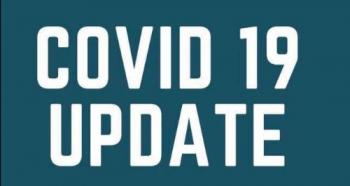Hamden Budget Updates

Christian McNamara, Senior Editor and Director of the New Bagehot Project at the Yale Program on Financial Stability (YPFS), recently discussed Hamden's anticipated fiscal shortfalls. He offered an insightful look to the future of Hamden with an expected budget deficit.
It is important that my constituents know about the fiscal health of Hamden. There will necessarily be a combination of property tax increases or loss of services. It is up to the Legislative Council to make that determination. Representatives Porter and D’Agostino, along with myself, advocate to bring as much money back to the town as possible - along with the other 148 State Representatives for their respective towns. Barring any miraculous intervention, it is important that you are informed as to the situation locally.
If you would like to receive Christian’s e-mails directly in the future, email him and ask to be on his distribution list.

"The financial challenges facing Hamden seem less central in light of the long-overdue conversations that are currently taking place about racial justice in this country, but there have been some significant developments occurring as we near the deadline for the FY21 budget that I think it is important to highlight.
The Legislative Council had yet another marathon budget deliberation session on Saturday. I was unable to attend most of the session, but have received multiple reports about the discussion. These reports are consistent with an account of the session that was published today in the New Haven Independent by the invaluable Sam Gurwitt. My main takeaway is that based on what I have heard (and I look forward to reviewing a recording of the full session as soon as it is made available on the town’s website and updating this assessment as necessary), this is the most candid I have ever seen the administration or its representatives be about how dire our financial condition is in the entire time I’ve been studying the town’s fiscal situation. None of the specific problems acknowledged on Saturday are a surprise to those who have studied the situation, but the fact that they are finally being acknowledged by the administration is, I think, an indication of just how serious those problems have become. To highlight a few of the specific problems acknowledged:
We expect to end FY20 with a negative general fund balance. Again not, surprising. We began the fiscal year with less than $2M in the general fund and are anticipating a deficit of $8 million to $12 million. In past years we’ve avoided negative fund balances by using money borrowed for other purposes to cover shortfalls. It would appear that we’ve run out of the ability to do so (whether or not we should have been doing so in the first place at all). The general fund balance is often likened to a “rainy day fund” and typically must be at least 6% to 10% of annual town expenditures to be considered minimally healthy. In recent years ours has been more like 0.6%. And now it is anticipated to be negative. This will likely have practical implications for our bond ratings and ability to borrow money. Given our other financial challenges, it would also qualify us for Tier III of MARB (a form of state oversight for the most financially distressed municipalities).
To meet projected expenses the mill rate will need to be increased to around 52 (a 6% increase from last year) with the possibility of even more tax increases mid-year if questionable COVID-related relief does not come in. The Mayor’s profoundly unserious proposed budget contained a proposed mill rate increase to just below 50 (a 2% increase). It “accomplished” this by projecting record high revenues in a number of non-tax categories like permitting fees, voluntary contributions from Quinnipiac, etc. After paring these bogus revenue projections back and despite the Legislative Council’s efforts to cut expenses, the current gap between revenues and expenses would require an increase to a mill rate of 52. This is with $6 million in projected revenue for COVID relief. No basis for that figure has been provided. The Council has already signaled its intention to pursue a mid-year tax increase should this revenue fail to materialize. This would put the mill rate at something more like 54, for a more than 10% total increase from last year.
We may have lost our ability to borrow any more money, which could result in us not having the funds available to pay maturing obligations. In addition to our $22.2M in debt service in FY21, in August we must repay an $18.5M bond anticipation note (BAN) to Webster Bank. The current plan is to issue bonds and use the proceeds to pay off the BANs. However, as the town’s own financial advisor acknowledged on Saturday, there is very real doubt about whether we will be able to issue bonds given the town’s terrible bond rating and conditions in municipal bond markets. If we cannot issue bonds we will have to come up with the $18.5M in cash ourselves. It is unclear where we would be able to access that kind of cash given a fund balance that is already expected to be negative and tax revenue that is already being fully allocated to other FY21 expenses. In the words of the town’s financial advisor as quoted in the New Haven Independent, there is no Plan B.
The Legislative Council has been working tirelessly to try to salvage the profoundly unserious proposed budget put forth by a Mayor who has not exercised one iota of leadership on this issue. I believe they have done what they can to date given the circumstances, but that it is still not enough. I urge them to make one final push to try to get this situation under control. Going budget line by budget line to find savings is a waste of their time at this point and not something they’re equipped to do in the first place. The Legislative Council should consider imposing across-the-board cuts of a fixed percentage to all departments in an amount necessary to keep the mill rate at 50. It is the job of the Mayor and his department heads to figure out how to make the town run on the money we have available to us. They are the ones in the position to know if/how we can absorb the cuts that would be necessary to keep the mill rate at 50. If their response is “we cannot absorb cuts of that magnitude and keep the town running” then we need to start having some very difficult conversations about state intervention, Chapter 9 bankruptcy, etc. If the town cannot be run on the amount of money we have available to us without crippling tax increases, then more serious financial intervention is clearly required.
We will be organizing a public comment campaign to urge the Legislative Council to implement across-the-board cuts to keep the mill rate at 50 or to formally begin exploring both state intervention via MARB and Chapter 9 bankruptcy if such cuts are not possible. Again, if the town cannot be run on the amount of money we have available to us without crippling tax increases, then more serious financial intervention is clearly required. Please stay tuned for details on the public comment campaign. Public comments must be submitted by 6:30pm on Wednesday, so information about how to do so will go out shortly."





